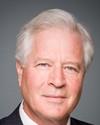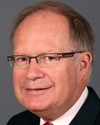Thank you, Chair.
Welcome. It's nice to see you again, and thank you for coming.
Regarding the Passport Canada audit, I note from the other areas of concern in the 2007 report that the agency's progress had been satisfactory and you were pleased with progress made in processing delays and contingency plans, but you had concerns with gaps.
We all bring different experiences to this committee. I used to work at Bell Canada, and we had service standards for answering telephones. Sometimes they were higher and sometimes they were lower and we had wait times on telephones and we had wait times to greet customers, etc.
The plans they have implemented here are fairly impressive. They brought in 76 new agents. They opened a new processing plant for mailing, which is a big part of their business. They expanded their regional offices. They broadened access to passport services. So these were all good things. And this is one that would be close to my heart, which is that they streamlined processes for walk-in applications, because nobody likes waiting in line, whether it's at a government agency or a bank or anywhere else.
Something that I thought was particularly interesting was a communications plan, because communication plans can be very powerful. Instead of waiting for everybody to come in at the last minute saying they have to get their passport--the Americans want to see one if they fly into the States, or if they arrive by land or sea--they reached out to the public and told them this was coming. They wrote to a lot of people, especially in border cities, and told them this was coming, so if they thought they were going to be travelling, they should get a passport. It could save a tonne of money on the operational side, because Passport Canada doesn't have the overtime hours and they don't have to rent new space and all that kind of thing. So the lineups and the delays in the turnaround times are in much, much better shape.
With regard to the gaps you wanted to identify, you said they had not established at what level of applications the actions should kick in, that there was no estimate on how much each contingency plan would increase capacity, and that it wasn't clear who should initiate the plans. My business experience is that when you're in an environment like that, there are some decisions you want to make on the front line, on the day, or within the week, etc., and they would normally go to the vice-president or the president. But you asked them to have something in writing. That makes sense, and the agency agreed with your recommendations.
But it struck me that by the time you did this audit, they had done all the heavy lifting. They'd made all the changes they needed, or most of the changes they needed to improve the service, and you were identifying things that, if you sat down at a senior management meeting, you could probably make those decisions based on the productivity analysis you already had.
Does that make sense to you?




